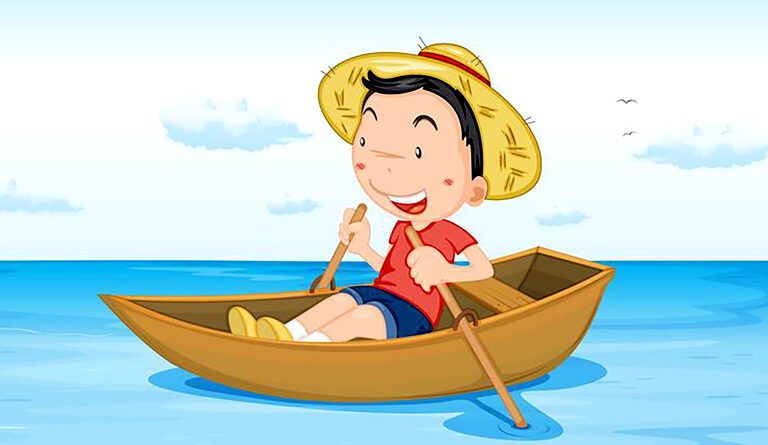The Secret Life of Water: Discover, Mix, Float & Evaporate
Experiments with Water Lesson Plan For Class 5
Hook
What Happens When You Leave a Bowl of Water in the Sun?
Learning Objectives
By the end of this lesson, students will be able to:
-
Understand and observe key properties of water: evaporation, solubility, and floating/sinking.
-
Identify that water has no shape of its own but takes the shape of its container.
-
Explore changes in water’s state through simple experiments.
-
Describe how and why some substances dissolve in water while others do not.
-
Make predictions and record observations from real-world experiments.
Key Vocabulary
-
Evaporation.
-
Soluble.
-
Insoluble.
-
Float.
-
Sink.
-
Condensation.
-
Volume.
-
Shape.
-
Transparent.
-
State of Matter.
Curiosity Questions
-
Why do our wet clothes dry when we hang them outside?
-
Can a stone float on water like a plastic ball?
-
What happens when you mix salt and water?
Topic Introduction
Water is all around us in oceans, rivers, rain, our bodies, and even in the air! It is a very special liquid that behaves in different ways. In this lesson, we will discover how water can change, mix, carry things, and even disappear into the air.
Analogies
-
Evaporation is like sugar dissolving in tea just like sugar disappears, water can disappear into the air, though it’s still there!
-
Water taking the shape of its container is like playdough fitting into a mold it adjusts itself to fit wherever it’s put.
Core Concept Explanation
Water is a liquid and one of the most important substances on Earth. It has no shape of its own, so it takes the shape of any container it’s in. Water can change forms it can evaporate into vapor, freeze into ice, or boil into steam.
Some objects float in water because they are lighter than water, while others sink because they are heavier. Some substances dissolve in water and are called soluble, while others do not and are called insoluble.
Scale or Context
Think about your kitchen: salt dissolves in water when cooking, oil floats on top, and steel spoons sink. These are examples of water’s properties in your everyday life!
DIY Hands-on Activity: “The Water Explorer Challenge”
Overview
Explore different properties of water mixing, dissolving, floating, and evaporating.
Materials Needed
-
2 transparent cups or bowls.
-
Water.
-
Salt, sugar, pepper, oil.
-
Small objects (coin, leaf, sponge, plastic cap, key).
-
Spoon.
-
Paper towel.
Safety Precautions
-
Avoid spilling water on the floor (it may cause slipping).
-
Handle small objects carefully.
Instructions
Solubility
-
Fill two glasses with water.
-
Add salt to one and stir. What happens?
-
Now add pepper to the other. What happens?
Floating/Sinking
-
One by one, drop objects into a bowl of water.
-
Make a chart: which items float? Which ones sink?
Evaporation
-
Wet a small cloth and place it in sunlight.
-
Observe over time. What do you notice after a few hours?
Observation/Exploration Task
Ask students to record the time taken for a wet cloth to dry in the sun and compare it to drying indoors. Ask: What do you think caused the difference?
Elaboration Activity
Role-Play:
Students take turns acting as Water Droplets and describe their journey: from rivers, to clouds, to rain, to puddles, and back to air!
Explanation & Recap
Water can change forms, carry other substances, and behave differently based on what’s put into it. Through observation and experimentation, we learn how water works and why it’s important for life.
Real-life Applications
-
Salt dissolving in water is used in cooking daily.
-
Evaporation helps us cool our bodies through sweat.
-
Water’s floating ability is used in boats and life jackets.
Quick Quiz (3 Questions)
-
What is it called when water turns into vapor?
-
Name one thing that floats and one that sinks in water.
-
Is oil soluble or insoluble in water?
Think-Pair-Share
Ask: “If you had to explain to a younger student why some things float and some sink, what would you say?”
Let pairs discuss and then share with the class.
Main Recap
-
Water can change states.
-
Some items float, others sink.
-
Some substances dissolve, others do not.
-
Water takes the shape of its container.
Creative Challenge
Design your own experiment using water and at least 3 objects from your home. Predict which will float, sink, or dissolve. Record your results and present it as a mini science project.
More to Explore
-
Why does ice float on water?
-
How do clouds form from water vapor?
-
Why do some lakes have saltier water than others?
Student Self-Evaluation
-
I understood how water behaves with different substances. (Yes / A little / Not yet)
-
I enjoyed the hands-on activities. (Yes / A little / Not really)
-
I can explain what evaporation means. (Yes / Not Yet)
Reflection
Which part of today’s water experiments did you enjoy the most and why?
Digital Learning Enhancements
YouTube Animation: Water Cycle for Kids – Learn About Evaporation & Condensation.
Interactive Simulation: PhET Interactive Water Simulation – Solubility States
Also Read Here: Matter and Its States Lesson Plan for Class 5


